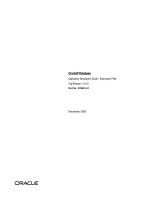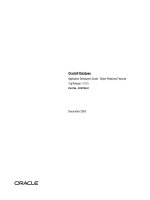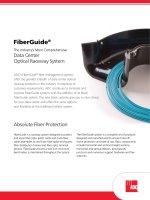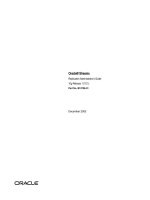Tài liệu New Hacker''''s Dictionary doc
Bạn đang xem bản rút gọn của tài liệu. Xem và tải ngay bản đầy đủ của tài liệu tại đây (10.94 MB, 1,078 trang )
Home
0
A
B
C
D
E
F
G
H
I
J
K
L
M
N
O
P
Q
R
S
T
U
V
W
X
Y
Z
MultiMedia Services
Internet Marketing
Search Engines Promotion
Online Advertising
Web Design
Web Hosting
Translation
Desktop Publishing
Word Processing
Business Consulting
Knowledge is power
Learn from intelligence services and hackers methods and secure your Internet connection!
Free tutorials and guides for your computer
Top Guides:
The New Hacker's Dictionary
Hacking with Windows XP
Guides to (mostly) Harmless Hacking
Windows Hacking
LANJacking: the New Hacker Mecca
Telnet: the Number One Hacker Tool
IRC Hacking
Teleactivities
Network
MultiMedia Ltd
Teleactivities
Mehedinti Info
Balkans
Online Casinos
Danube Casino
Environmental
Engineering
Waste Recycling
Design Resources
Online Security
NGO Romania
Nicolae Sfetcu
Ro Translators
Anticoruptia
Business Links
DeskTop Services
Free Books
Free Advertising
Free Gifts
IMNRC
Ro Forum
Dr. Tr. Severin
Confessions
Home Business
Telework Forum
Ro Trade
The Hacker Lab
The Hacker Test
Denial of Attacks
How to Fight Back when Computer Criminals Strike
The Hacker Wars
The War Tools: Scan, Sniff, Spoof and Hijack
Intelligence Services in action!
Unix Security
Quick and Easy Self-Defense for Home Computer Users
Quick and Easy Ways to Keep Hackers out of your Home Computer
The Magical Mystical Crypto-Primer. Cryptography as a security tool
The Project Gutenberg Etext of
The New Hacker's Dictionary
version 4.2.2
The Jargon Lexicon
0 | A | B | C | D | E | F | G | H | I | J | K | L | M | N | O | P | Q | R | S | T | U | V | W | X | Y | Z
See the full version
ADVERTISE WITH
US
0 | A | B | C | D | E | F | G | H | I | J | K | L | M | N | O | P | Q | R | S | T | U | V | W | X | Y | Z
0 | A | B | C | D | E | F | G | H | I | J | K | L | M | N | O | P | Q | R | S | T | U | V | W | X | Y | Z
Home
MultiMedia Services
Internet Marketing
Search Engines Promotion
Online Advertising
Web Design
Web Hosting
Translation
Desktop Publishing
Word Processing
Business Consulting
Node:= 0 =, Next:= A =, Up:The Jargon Lexicon
= 0 =
0:
1TBS:
120 reset:
2:
404:
404 compliant:
4.2:
@-party:
Node:0, Next:1TBS, Up:= 0 =
0
Numeric zero, as opposed to the letter `O' (the 15th letter of the English alphabet). In their
unmodified forms they look a lot alike, and various kluges invented to make them visually distinct
have compounded the confusion. If your zero is center-dotted and letter-O is not, or if letter-O
looks almost rectangular but zero looks more like an American football stood on end (or the
reverse), you're probably looking at a modern character display (though the dotted zero seems
to have originated as an option on IBM 3270 controllers). If your zero is slashed but letter-O is
not, you're probably looking at an old-style ASCII graphic set descended from the default
Teleactivities
Network
MultiMedia Ltd
Teleactivities
Mehedinti Info
Balkans
Online Casinos
Danube Casino
Environmental
Engineering
Waste Recycling
Design Resources
Online Security
NGO Romania
Nicolae Sfetcu
Ro Translators
Anticoruptia
Business Links
DeskTop Services
Free Books
Free Advertising
Free Gifts
typewheel on the venerable ASR-33 Teletype (Scandinavians, for whom Ø is a letter, curse this
arrangement). (Interestingly, the slashed zero long predates computers; Florian Cajori's
monumental "A History of Mathematical Notations" notes that it was used in the twelfth and
thirteenth centuries.) If letter-O has a slash across it and the zero does not, your display is tuned
for a very old convention used at IBM and a few other early mainframe makers (Scandinavians
curse this arrangement even more, because it means two of their letters collide). Some
Burroughs/Unisys equipment displays a zero with a reversed slash. Old CDC computers
rendered letter O as an unbroken oval and 0 as an oval broken at upper right and lower left. And
yet another convention common on early line printers left zero unornamented but added a tail or
hook to the letter-O so that it resembled an inverted Q or cursive capital letter-O (this was
endorsed by a draft ANSI standard for how to draw ASCII characters, but the final standard
changed the distinguisher to a tick-mark in the upper-left corner). Are we sufficiently confused
yet?
Node:1TBS, Next:120 reset, Previous:0, Up:= 0 =
1TBS // n.
The "One True Brace Style"; see
indent style.
Node:120 reset, Next:2, Previous:1TBS, Up:= 0 =
120 reset /wuhn-twen'tee ree'set/ n.
[from 120 volts, U.S. wall voltage] To cycle power on a machine in order to reset or unjam it.
Compare
Big Red Switch, power cycle.
IMNRC
Ro Forum
Dr. Tr. Severin
Confessions
Home Business
Telework Forum
Ro Trade
ADVERTISE WITH
US
Node:2, Next:404, Previous:120 reset, Up:= 0 =
2 infix.
In translation software written by hackers, infix 2 often represents the syllable to with the
connotation `translate to': as in dvi2ps (DVI to PostScript), int2string (integer to string), and
texi2roff (Texinfo to [nt]roff). Several versions of a joke have floated around the internet in which
some idiot programmer fixes the Y2K bug by changing all the Y's in something to K's, as in
Januark, Februark, etc.
Node:404, Next:404 compliant, Previous:2, Up:= 0 =
404 // n.
[from the HTTP error "file not found on server"] Extended to humans to convey that the subject
has no idea or no clue - sapience not found. May be used reflexively; "Uh, I'm 404ing" means
"I'm drawing a blank".
Node:404 compliant, Next:4.2, Previous:404, Up:= 0 =
404 compliant adj.
The status of a website which has been completely removed, usually by the administrators of the
hosting site as a result of net abuse by the website operators. The term is a tongue-in-cheek
reference to the standard "301 compliant" Murkowski Bill disclaimer used by spammers. See
also:
spam, spamvertize.
Node:4.2, Next:@-party, Previous:404 compliant, Up:= 0 =
4.2 /for' poynt too'/ n.
Without a prefix, this almost invariably refers to
BSD Unix release 4.2. Note that it is an
indication of cluelessness to say "version 4.2", and "release 4.2" is rare; the number stands on
its own, or is used in the more explicit forms 4.2BSD or (less commonly) BSD 4.2. Similar
remarks apply to "4.3", "4.4" and to earlier, less-widespread releases 4.1 and 2.9.
Node:@-party, Next:abbrev, Previous:4.2, Up:= 0 =
@-party /at'par`tee/ n.
[from the @-sign in an Internet address] (alt. `@-sign party' /at'si:n par`tee/) A semi-closed party
thrown for hackers at a science-fiction convention (esp. the annual World Science Fiction
Convention or "Worldcon"); one must have a
network address to get in, or at least be in
company with someone who does. One of the most reliable opportunities for hackers to meet
face to face with people who might otherwise be represented by mere phosphor dots on their
screens. Compare
boink.
The first recorded @-party was held at the Westercon (a U.S. western regional SF convention)
over the July 4th weekend in 1980. It is not clear exactly when the canonical @-party venue
shifted to the Worldcon but it had certainly become established by Constellation in 1983. Sadly,
the @-party tradition has been in decline since about 1996, mainly because having an @-
address no longer functions as an effective lodge pin.
0 | A | B | C | D | E | F | G | H | I | J | K | L | M | N | O | P | Q | R | S | T | U | V | W | X | Y | Z
Home
MultiMedia Services
Internet Marketing
Search Engines Promotion
Online Advertising
Web Design
Web Hosting
Translation
Desktop Publishing
Word Processing
Business Consulting
Node:= A =, Next:= B =, Previous:= 0 =, Up:The Jargon Lexicon
= A =
abbrev:
ABEND:
accumulator:
ACK:
Acme:
acolyte:
ad-hockery:
Ada:
address harvester:
adger:
admin:
ADVENT:
AFAIK:
AFJ:
AFK:
AI:
AI-complete:
AI koans:
AIDS:
AIDX:
airplane rule:
Alderson loop:
aliasing bug:
Alice and Bob:
Teleactivities
Network
MultiMedia Ltd
Teleactivities
Mehedinti Info
Balkans
Online Casinos
Danube Casino
Environmental
Engineering
Waste Recycling
Design Resources
Online Security
NGO Romania
Nicolae Sfetcu
Ro Translators
Anticoruptia
Business Links
DeskTop Services
Free Books
Free Advertising
Free Gifts
IMNRC
all-elbows:
alpha geek:
alpha particles:
alt:
alt bit:
Aluminum Book:
ambimouseterous:
Amiga:
Amiga Persecution Complex:
amoeba:
amp off:
amper:
Angband:
angle brackets:
angry fruit salad:
annoybot:
annoyware:
ANSI:
ANSI standard:
ANSI standard pizza:
AOL!:
app:
arena:
arg:
ARMM:
armor-plated:
asbestos:
asbestos cork award:
asbestos longjohns:
ASCII:
ASCII art:
ASCIIbetical order:
astroturfing:
atomic:
attoparsec:
AUP:
autobogotiphobia:
automagically:
Ro Forum
Dr. Tr. Severin
Confessions
Home Business
Telework Forum
Ro Trade
ADVERTISE WITH
US
avatar:
awk:
Node:abbrev, Next:ABEND, Previous:@-party, Up:= A =
abbrev /*-breev'/, /*-brev'/ n.
Common abbreviation for `abbreviation'.
Node:ABEND, Next:accumulator, Previous:abbrev, Up:= A =
ABEND /a'bend/, /*-bend'/ n.
[ABnormal END] 1. Abnormal termination (of software);
crash; lossage. Derives from an error
message on the IBM 360; used jokingly by hackers but seriously mainly by
code grinders. Usually
capitalized, but may appear as `abend'. Hackers will try to persuade you that ABEND is called
`abend' because it is what system operators do to the machine late on Friday when they want to call it
a day, and hence is from the German `Abend' = `Evening'. 2. [alt.callahans] Absent By Enforced Net
Deprivation - used in the subject lines of postings warning friends of an imminent loss of Internet
access. (This can be because of computer downtime, loss of provider, moving or illness.) Variants of
this also appear: ABVND = `Absent By Voluntary Net Deprivation' and ABSEND = `Absent By Self-
Enforced Net Deprivation' have been sighted.
Node:accumulator, Next:ACK, Previous:ABEND, Up:= A =
accumulator n. obs.
1. Archaic term for a register. On-line use of it as a synonym for `register' is a fairly reliable indication
that the user has been around for quite a while and/or that the architecture under discussion is quite
old. The term in full is almost never used of microprocessor registers, for example, though symbolic
names for arithmetic registers beginning in `A' derive from historical use of the term `accumulator'
(and not, actually, from `arithmetic'). Confusingly, though, an `A' register name prefix may also stand
for `address', as for example on the Motorola 680x0 family. 2. A register being used for arithmetic or
logic (as opposed to addressing or a loop index), especially one being used to accumulate a sum or
count of many items. This use is in context of a particular routine or stretch of code. "The FOOBAZ
routine uses A3 as an accumulator." 3. One's in-basket (esp. among old-timers who might use sense
1). "You want this reviewed? Sure, just put it in the accumulator." (See
stack.)
Node:ACK, Next:Acme, Previous:accumulator, Up:= A =
ACK /ak/ interj.
1. [common; from the ASCII mnemonic for 0000110] Acknowledge. Used to register one's presence
(compare mainstream Yo!). An appropriate response to
ping or ENQ. 2. [from the comic strip "Bloom
County"] An exclamation of surprised disgust, esp. in "Ack pffft!" Semi-humorous. Generally this
sense is not spelled in caps (ACK) and is distinguished by a following exclamation point. 3. Used to
politely interrupt someone to tell them you understand their point (see
NAK). Thus, for example, you
might cut off an overly long explanation with "Ack. Ack. Ack. I get it now". 4. An affirmative. "Think we
ought to ditch that damn NT server for a Linux box?" "ACK!"
There is also a usage "ACK?" (from sense 1) meaning "Are you there?", often used in email when
earlier mail has produced no reply, or during a lull in
talk mode to see if the person has gone away
(the standard humorous response is of course
NAK (sense 1), i.e., "I'm not here").
Node:Acme, Next:acolyte, Previous:ACK, Up:= A =
Acme n.
The canonical supplier of bizarre, elaborate, and non-functional gadgetry - where Rube Goldberg and
Heath Robinson (two cartoonists who specialized in elaborate contraptions) shop. The name has
been humorously expanded as A (or American) Company Making Everything. (In fact, Acme was a
real brand sold from Sears Roebuck catalogs in the early 1900s.) Describing some X as an "Acme X"
either means "This is
insanely great", or, more likely, "This looks insanely great on paper, but in
practice it's really easy to shoot yourself in the foot with it." Compare
pistol.
This term, specially cherished by American hackers and explained here for the benefit of our
overseas brethren, comes from the Warner Brothers' series of "Roadrunner" cartoons. In these
cartoons, the famished Wile E. Coyote was forever attempting to catch up with, trap, and eat the
Roadrunner. His attempts usually involved one or more high-technology Rube Goldberg devices -
rocket jetpacks, catapults, magnetic traps, high-powered slingshots, etc. These were usually
delivered in large cardboard boxes, labeled prominently with the Acme name. These devices
invariably malfunctioned in improbable and violent ways.
Node:acolyte, Next:ad-hockery, Previous:Acme, Up:= A =
acolyte n. obs.
[TMRC] An
OSU privileged enough to submit data and programs to a member of the priesthood.
Node:ad-hockery, Next:Ada, Previous:acolyte, Up:= A =
ad-hockery /ad-hok'*r-ee/ n.
[Purdue] 1. Gratuitous assumptions made inside certain programs, esp. expert systems, which lead to
the appearance of semi-intelligent behavior but are in fact entirely arbitrary. For example, fuzzy-
matching of input tokens that might be typing errors against a symbol table can make it look as
though a program knows how to spell. 2. Special-case code to cope with some awkward input that
would otherwise cause a program to
choke, presuming normal inputs are dealt with in some cleaner
and more regular way. Also called `ad-hackery', `ad-hocity' (/ad-hos'*-tee/), `ad-crockery'. See also
ELIZA effect.
Node:Ada, Next:address harvester, Previous:ad-hockery, Up:= A =
Ada n.
A
Pascal-descended language that was at one time made mandatory for Department of Defense
software projects by the Pentagon. Hackers are nearly unanimous in observing that, technically, it is
precisely what one might expect given that kind of endorsement by fiat; designed by committee,
crockish, difficult to use, and overall a disastrous, multi-billion-dollar boondoggle (one common
description wss "The PL/I of the 1980s"). Hackers find Ada's exception-handling and inter-process
communication features particularly hilarious. Ada Lovelace (the daughter of Lord Byron who became
the world's first programmer while cooperating with Charles Babbage on the design of his mechanical
computing engines in the mid-1800s) would almost certainly blanch at the use to which her name has
latterly been put; the kindest thing that has been said about it is that there is probably a good small
language screaming to get out from inside its vast,
elephantine bulk.
Node:address harvester, Next:adger, Previous:Ada, Up:= A =
address harvester n.
A robot that searches web pages and/or filters netnews traffic looking for valid email addresses.
Some address harvesters are benign, used only for compiling address directories. Most,
unfortunately, are run by miscreants compiling address lists to
spam. Address harvesters can be
foiled by a
teergrube.
Node:adger, Next:admin, Previous:address harvester, Up:= A =
adger /aj'r/ vt.
[UCLA mutant of
nadger, poss. also from the middle name of an infamous tenured graduate
student] To make a bonehead move with consequences that could have been foreseen with even
slight mental effort. E.g., "He started removing files and promptly adgered the whole project".
Compare
dumbass attack.
Node:admin, Next:ADVENT, Previous:adger, Up:= A =
admin /ad-min'/ n.
Short for `administrator'; very commonly used in speech or on-line to refer to the systems person in
charge on a computer. Common constructions on this include `sysadmin' and `site admin'
(emphasizing the administrator's role as a site contact for email and news) or `newsadmin' (focusing
specifically on news). Compare
postmaster, sysop, system mangler.
Node:ADVENT, Next:AFAIK, Previous:admin, Up:= A =
ADVENT /ad'vent/ n.
The prototypical computer adventure game, first designed by Will Crowther on the
PDP-10 in the mid-
1970s as an attempt at computer-refereed fantasy gaming, and expanded into a puzzle-oriented
game by Don Woods at Stanford in 1976. (Woods had been one of the authors of
INTERCAL.) Now
better known as Adventure or Colossal Cave Adventure, but the
TOPS-10 operating system
permitted only six-letter filenames. See also
vadding, Zork, and Infocom.
This game defined the terse, dryly humorous style since expected in text adventure games, and
popularized several tag lines that have become fixtures of hacker-speak: "A huge green fierce snake
bars the way!" "I see no X here" (for some noun X). "You are in a maze of twisty little passages, all
alike." "You are in a little maze of twisty passages, all different." The `magic words'
xyzzy and plugh
also derive from this game.
Crowther, by the way, participated in the exploration of the Mammoth & Flint Ridge cave system; it
actually has a `Colossal Cave' and a `Bedquilt' as in the game, and the `Y2' that also turns up is
cavers' jargon for a map reference to a secondary entrance.
ADVENT sources are available for FTP at
/>archive/games/source/advent.tar.Z. There is a
Node:AFAIK, Next:AFJ, Previous:ADVENT, Up:= A =
AFAIK // n.
[Usenet] Abbrev. for "As Far As I Know".
Node:AFJ, Next:AFK, Previous:AFAIK, Up:= A =
AFJ // n.
Written-only abbreviation for "April Fool's Joke". Elaborate April Fool's hoaxes are a long-established
tradition on Usenet and Internet; see
kremvax for an example. In fact, April Fool's Day is the only
seasonal holiday consistently marked by customary observances on Internet and other hacker
networks.
Node:AFK, Next:AI, Previous:AFJ, Up:= A =
AFK
[MUD] Abbrev. for "Away From Keyboard". Used to notify others that you will be momentarily
unavailable online. eg. "Let's not go kill that frost giant yet, I need to go AFK to make a phone call".
Often MUDs will have a command to politely inform others of your absence when they try to talk with
you. The term is not restricted to MUDs, however, and has become common in many chat situations,
from IRC to Unix talk.
Node:AI, Next:AI-complete, Previous:AFK, Up:= A =
AI /A-I/ n.
Abbreviation for `Artificial Intelligence', so common that the full form is almost never written or spoken
among hackers.
Node:AI-complete, Next:AI koans, Previous:AI, Up:= A =
AI-complete /A-I k*m-pleet'/ adj.
[MIT, Stanford: by analogy with `NP-complete' (see
NP-)] Used to describe problems or subproblems
in AI, to indicate that the solution presupposes a solution to the `strong AI problem' (that is, the
synthesis of a human-level intelligence). A problem that is AI-complete is, in other words, just too
hard.
Examples of AI-complete problems are `The Vision Problem' (building a system that can see as well
as a human) and `The Natural Language Problem' (building a system that can understand and speak
a natural language as well as a human). These may appear to be modular, but all attempts so far
(1999) to solve them have foundered on the amount of context information and `intelligence' they
seem to require. See also
gedanken.
Node:AI koans, Next:AIDS, Previous:AI-complete, Up:= A =
AI koans /A-I koh'anz/ pl.n.
A series of pastiches of Zen teaching riddles created by Danny Hillis at the MIT AI Lab around various
major figures of the Lab's culture (several are included under
Some AI Koans in Appendix A). See
also
ha ha only serious, mu, and hacker humor.
Node:AIDS, Next:AIDX, Previous:AI koans, Up:= A =
AIDS /aydz/ n.
Short for A* Infected Disk Syndrome (`A*' is a
glob pattern that matches, but is not limited to, Apple
or Amiga), this condition is quite often the result of practicing unsafe
SEX. See virus, worm, Trojan
horse, virgin.
Node:AIDX, Next:airplane rule, Previous:AIDS, Up:= A =
AIDX /ayd'k*z/ n.
Derogatory term for IBM's perverted version of Unix, AIX, especially for the AIX 3.? used in the IBM
RS/6000 series (some hackers think it is funnier just to pronounce "AIX" as "aches"). A victim of the
dreaded "hybridism" disease, this attempt to combine the two main currents of the Unix stream (BSD
and
USG Unix) became a monstrosity to haunt system administrators' dreams. For example, if new
accounts are created while many users are logged on, the load average jumps quickly over 20 due to
silly implementation of the user databases. For a quite similar disease, compare
HP-SUX. Also,
compare
Macintrash, Nominal Semidestructor, ScumOS, sun-stools.
Node:airplane rule, Next:Alderson loop, Previous:AIDX, Up:= A =
airplane rule n.
"Complexity increases the possibility of failure; a twin-engine airplane has twice as many engine
problems as a single-engine airplane." By analogy, in both software and electronics, the rule that
simplicity increases robustness. It is correspondingly argued that the right way to build reliable
systems is to put all your eggs in one basket, after making sure that you've built a really good basket.
See also
KISS Principle, elegant.
Node:Alderson loop, Next:aliasing bug, Previous:airplane rule, Up:= A =
Alderson loop n.
[Intel] A special version of an
infinite loop where there is an exit condition available, but inaccessible
in the current implementation of the code. Typically this is created while debugging user interface
code. An example would be when there is a menu stating, "Select 1-3 or 9 to quit" and 9 is not
allowed by the function that takes the selection from the user.
This term received its name from a programmer who had coded a modal message box in MSAccess
with no Ok or Cancel buttons, thereby disabling the entire program whenever the box came up. The
message box had the proper code for dismissal and even was set up so that when the non-existent
Ok button was pressed the proper code would be called.
Node:aliasing bug, Next:Alice and Bob, Previous:Alderson loop, Up:= A =
aliasing bug n.
A class of subtle programming errors that can arise in code that does dynamic allocation, esp. via
malloc(3) or equivalent. If several pointers address (`aliases for') a given hunk of storage, it may
happen that the storage is freed or reallocated (and thus moved) through one alias and then
referenced through another, which may lead to subtle (and possibly intermittent) lossage depending
on the state and the allocation history of the malloc
arena. Avoidable by use of allocation strategies
that never alias allocated core, or by use of higher-level languages, such as
LISP, which employ a
garbage collector (see
GC). Also called a stale pointer bug. See also precedence lossage, smash
the stack, fandango on core, memory leak, memory smash, overrun screw, spam.
Historical note: Though this term is nowadays associated with C programming, it was already in use
in a very similar sense in the Algol-60 and FORTRAN communities in the 1960s.
Node:Alice and Bob, Next:all-elbows, Previous:aliasing bug, Up:= A =
Alice and Bob n.
The archetypal individuals used as examples in discussions of cryptographic protocols. Originally,
theorists would say something like: "A communicates with someone who claims to be B, So to be
sure, A tests that B knows a secret number K. So A sends to B a random number X. B then forms Y
by encrypting X under key K and sends Y back to A" Because this sort of thing is is quite hard to
follow, theorists stopped using the unadorned letters A and B to represent the main players and
started calling them Alice and Bob. So now we say "Alice communicates with someone claiming to be
Bob, and to be sure, So Alice tests that Bob knows a secret number K. Alice sends to Bob a random
number X. Bob then forms Y by encrypting X under key K and sends Y back to Alice". A whole
mythology rapidly grew up around the metasyntactic names; see
In Bruce Schneier's definitive introductory text "Applied Cryptography" (2nd ed., 1996, John Wiley &
Sons, ISBN 0-471-11709-9) he introduces a table of dramatis personae headed by Alice and Bob.
Others include Carol (a participant in three- and four-party protocols), Dave (a participant in four-party
protocols), Eve (an eavesdropper), Mallory (a malicious active attacker), Trent (a trusted arbitrator),
Walter (a warden), Peggy (a prover) and Victor (a verifier). These names for roles are either already
standard or, given the wide popularity of the book, may be expected to quickly become so.
Node:all-elbows, Next:alpha geek, Previous:Alice and Bob, Up:= A =
all-elbows adj.
[MS-DOS] Of a TSR (terminate-and-stay-resident) IBM PC program, such as the N pop-up calendar
and calculator utilities that circulate on
BBS systems: unsociable. Used to describe a program that
rudely steals the resources that it needs without considering that other TSRs may also be resident.
One particularly common form of rudeness is lock-up due to programs fighting over the keyboard
interrupt. See
rude, also mess-dos.
Node:alpha geek, Next:alpha particles, Previous:all-elbows, Up:= A =
alpha geek n.
[from animal ethologists' `alpha male'] The most technically accomplished or skillful person in some
implied context. "Ask Larry, he's the alpha geek here."
Node:alpha particles, Next:alt, Previous:alpha geek, Up:= A =
alpha particles n.
See bit rot.
Node:alt, Next:alt bit, Previous:alpha particles, Up:= A =
alt /awlt/
1. n. The alt shift key on an IBM PC or
clone keyboard; see bucky bits, sense 2 (though typical PC
usage does not simply set the 0200 bit). 2. n. The `option' key on a Macintosh; use of this term
usually reveals that the speaker hacked PCs before coming to the Mac (see also
feature key, which
is sometimes incorrectly called `alt'). 3. n.,obs. [PDP-10; often capitalized to ALT] Alternate name for
the ASCII ESC character (ASCII 0011011), after the keycap labeling on some older terminals; also
`altmode' (/awlt'mohd/). This character was almost never pronounced `escape' on an ITS system, in
TECO, or under TOPS-10 -- always alt, as in "Type alt alt to end a TECO command" or "alt-U onto
the system" (for "log onto the [ITS] system"). This usage probably arose because alt is more
convenient to say than `escape', especially when followed by another alt or a character (or another alt
and a character, for that matter). 4. The alt hierarchy on Usenet, the tree of newsgroups created by
users without a formal vote and approval procedure. There is a myth, not entirely implausible, that alt
is acronymic for "anarchists, lunatics, and terrorists"; but in fact it is simply short for "alternative".
Node:alt bit, Next:Aluminum Book, Previous:alt, Up:= A =
alt bit /awlt bit/ [from alternate] adj.
See
meta bit.
Node:Aluminum Book, Next:ambimouseterous, Previous:alt bit, Up:= A =
Aluminum Book n.
[MIT] "Common LISP: The Language", by Guy L. Steele Jr. (Digital Press, first edition 1984, second
edition 1990). Note that due to a technical screwup some printings of the second edition are actually
of a color the author describes succinctly as "yucky green". See also
book titles.
Node:ambimouseterous, Next:Amiga, Previous:Aluminum Book, Up:= A =
ambimouseterous /am-b*-mows'ter-us/ or /am-b*-mows'trus/ adj.
[modeled on ambidextrous] Able to use a mouse with either hand.
Node:Amiga, Next:Amiga Persecution Complex, Previous:ambimouseterous, Up:= A =
Amiga n
A series of personal computer models originally sold by Commodore, based on 680x0 processors,
custom support chips and an operating system that combined some of the best features of Macintosh
and Unix with compatibility with neither.
The Amiga was released just as the personal computing world standardized on IBM-PC clones. This
prevented it from gaining serious market share, despite the fact that the first Amigas had a substantial
technological lead on the IBM XTs of the time. Instead, it acquired a small but zealous population of
enthusiastic hackers who dreamt of one day unseating the clones (see
Amiga Persecution
Complex). The traits of this culture are both spoofed and illuminated in The BLAZE Humor Viewer.
The strength of the Amiga platform seeded a small industry of companies building software and
hardware for the platform, especially in graphics and video applications (see
video toaster).
Due to spectacular mismanagement, Commodore did hardly any R&D, allowing the competition to
close Amiga's technological lead. After Commodore went bankrupt in 1994 the technology passed
through several hands, none of whom did much with it. However, the Amiga is still being produced in
Europe under license and has a substantial number of fans, which will probably extend the platform's
life considerably.
Node:Amiga Persecution Complex, Next:amoeba, Previous:Amiga, Up:= A =
Amiga Persecution Complex n.
The disorder suffered by a particularly egregious variety of
bigot, those who believe that the
marginality of their preferred machine is the result of some kind of industry-wide conspiracy (for
without a conspiracy of some kind, the eminent superiority of their beloved shining jewel of a platform
would obviously win over all, market pressures be damned!) Those afflicted are prone to engaging in
flame wars and calling for boycotts and mailbombings. Amiga Persecution Complex is by no means
limited to Amiga users; NeXT,
NeWS, OS/2, Macintosh, LISP, and GNU users are also common
victims.
Linux users used to display symptoms very frequently before Linux started winning; some
still do. See also
newbie, troll, holy wars, weenie, Get a life!.
Node:amoeba, Next:amp off, Previous:Amiga Persecution Complex, Up:= A =
amoeba n.
Humorous term for the Commodore Amiga personal computer.
Node:amp off, Next:amper, Previous:amoeba, Up:= A =
amp off vt.
[Purdue] To run in
background. From the Unix shell `&' operator.
Node:amper, Next:Angband, Previous:amp off, Up:= A =
amper n.
Common abbreviation for the name of the ampersand (`&', ASCII 0100110) character. See
ASCII for
other synonyms.
Node:Angband, Next:angle brackets, Previous:amper, Up:= A =
Angband n. /ang'band/
Like
nethack, moria, and rogue, one of the large freely distributed Dungeons-and-Dragons-like
simulation games, available for a wide range of machines and operating systems. The name is from
Tolkien's Pits of Angband (compare
elder days, elvish). Has been described as "Moria on steroids";
but, unlike Moria, many aspects of the game are customizable. This leads many hackers and would-
be hackers into fooling with these instead of doing productive work. There are many Angband
variants, of which the most notorious is probably the rather whimsical Zangband. In this game, when
a key that does not correspond to a command is pressed, the game will display "Type ? for help" 50%
of the time. The other 50% of the time, random error messages including "An error has occurred
because an error of type 42 has occurred" and "Windows 95 uninstalled successfully" will be
displayed. Zangband also allows the player to kill Santa Claus (who has some really good stuff, but
also has a lot of friends), "Bull Gates", and Barney the Dinosaur (but be watchful; Barney has a nasty
case of halitosis). There is an official angband home page at
and a
zangband one at
. See also Random Number God.
Node:angle brackets, Next:angry fruit salad, Previous:Angband, Up:= A =
angle brackets n.
Either of the characters < (ASCII 0111100) and > (ASCII 0111110) (ASCII less-than or greater-than
signs). Typographers in the
Real World use angle brackets which are either taller and slimmer (the
ISO `Bra' and `Ket' characters), or significantly smaller (single or double guillemets) than the less-
than and greater-than signs. See
broket, ASCII.
Node:angry fruit salad, Next:annoybot, Previous:angle brackets, Up:= A =
angry fruit salad n.
A bad visual-interface design that uses too many colors. (This term derives, of course, from the
bizarre day-glo colors found in canned fruit salad.) Too often one sees similar effects from interface
designers using color window systems such as
X; there is a tendency to create displays that are
flashy and attention-getting but uncomfortable for long-term use.
Node:annoybot, Next:annoyware, Previous:angry fruit salad, Up:= A =
annoybot /*-noy-bot/ n.
[IRC] See
bot.









